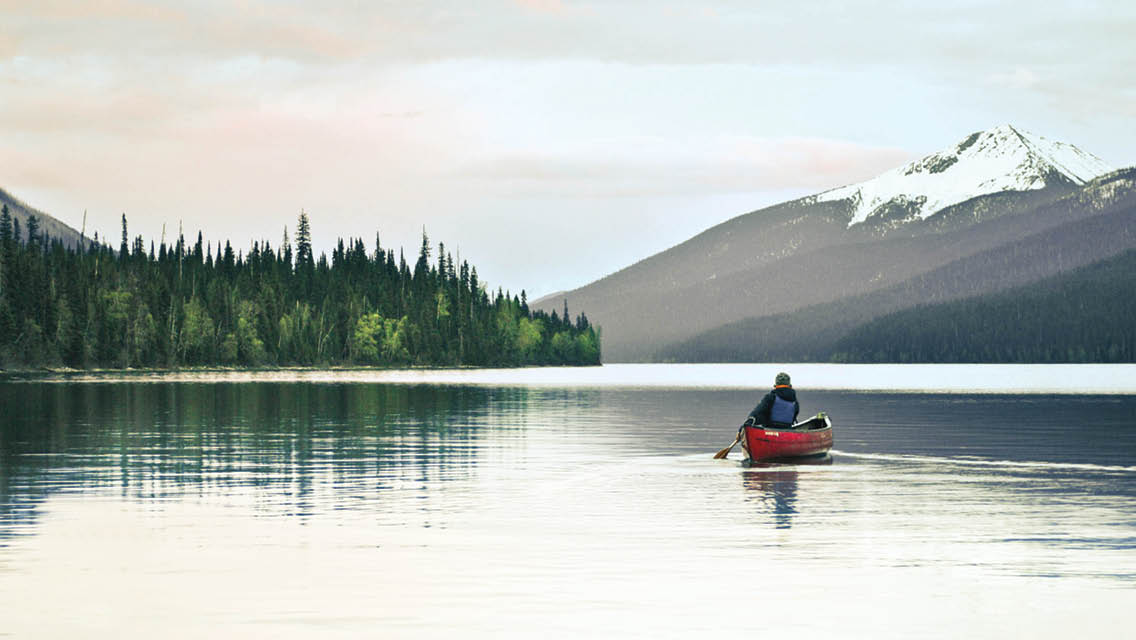My family owns a cabin in northern Minnesota, near the million acres of protected wilderness known as the Boundary Waters. We spend as much time there as we can, in part because there are few things as restorative to the mind and spirit as being out in nature.
When I need to get centered, I get in my canoe and paddle to one of my favorite spots. The sound of the wind, the activity of the wildlife, and the hypnotic view of the waves are usually all I need to settle my mind and heart.
I’m certainly not the only one who turns to nature for solace: Humans have known about the restorative effects of the natural world for as long as we’ve existed. The history of art and culture is full of evidence. And recent research has begun to quantify what many of us have long understood intuitively — that nature offers concrete benefits for mental health.
Several studies have found that even a brief walk in a natural environment — really any place with plants and trees — can spark more positive thoughts, reduce anxiety and stress, improve attention, and encourage prosocial behaviors, such as kindness (see “Walking in Nature Can Change Your Brain“). How does this happen?
My colleague Tim Culbert, MD, is a fellow outdoors enthusiast who has written about how time in nature supports mind and mood. Here, he describes some of its most salient impacts on mental health.
Tim Culbert, MD, on Nature’s Mental-Health Benefits
Awe and wonder. The experience of awe and wonder in natural settings has been correlated with lower levels of inflammatory chemicals called cytokines, which have been linked to depression. Awe-inspiring moments also appear to facilitate the release of dopamine in the brain. Dopamine is the neurotransmitter associated with reward, motivation, desire, and euphoria.
Chemical Upsides. Indoor air lacks many of the healing components of outdoor air, especially the air near greenery, which is full of chemicals called phytoncides. These natural compounds include the scent molecules that help protect trees and plants from insects and disease. We breathe in these chemicals when we’re around plants and trees, and they appear to support the human immune system as well as the forest ecosystem.
Nervous-system restoration. According to various studies, time in nature can help tone down the stress response and increase the relaxation response in the nervous system. This involves physical changes like lowered blood pressure and increased heart-rate variability (HRV), which is a positive marker for general health and wellness.
Rest for the brain. Natural settings may encourage a meditative state, which can ease the brain drain of our multiple devices. Engaging with electronics 24/7 requires the constant engagement of the brain’s prefrontal cortex. This depletes cognitive resources and brain energy. By contrast, a stroll outdoors encourages the mind to wander, reducing the active use of brain resources. Research suggests that this helps turn on the brain’s default mode network (DMN), which supports creative thinking. The DMN works best when we are not actively thinking.
Reset for the body electric. Our electronic devices also emit positive ions that can disrupt the electrical balance in our bodies. The earth, by contrast, is a reservoir of negative ions. Restore balance by taking about 20 to 30 minutes each day to get “grounded” on (or in) dirt, grass, rock, unpainted concrete, or water. (Connecting regularly to the earth’s electrical energy can offer myriad physical and mental health benefits. See “What Is Earthing” to learn more.)
Ready to Head Out?
Work more outdoor time into your schedule — even if you’re busy — with these ideas:
If you have 5 minutes:
- Stand outside with the sun on your face.
- Gaze out the window at trees and plants.
- Step onto the grass in your bare feet.
If you have 25 minutes:
- Take a slow walk; breathe in the fresh air.
- Find an outdoor space to eat lunch.
- Conduct your next meeting or phone call outside.
If you have 2 to 3 hours:
- Pack a picnic meal and invite friends to join you.
- Explore nearby parks, trails, or sidewalks.
- Relax in a hammock.
If you have all day:
- Pack a lunch and a water bottle and spend the day exploring a state park.
- Rent a kayak or canoe and spend a day on a lake or river.
- Take an all-day bike outing.
This article originally appeared as “Take It Outside” in the April 2022 issue of Experience Life.





This Post Has 3 Comments
Counting the days until the outside lap pool opens . There is nothing to compare to the joy I feel swimming with music in my ears, looking up at a bright blue sky with white fluffy clouds. Can’t come soon enough for this lady!!!
I’m going to try and walk outside with my friend in the wheelchair, with a picnic basket. Hope all goes well.
This article was validating! I LOVE to be outside in nature walking, hiking, swimming, peak-bagging etc. These are the healthiest of addictions, in my opinion!😉 Anything outdoors is better: cooking, reading, playing cards, difficult conversations, calming a child. Nature is a wonderful backdrop for weddings too!